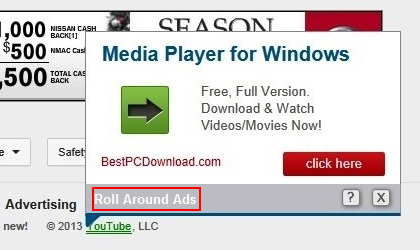Accurately diagnosing the PC problem when Roll Around Ads are popping up on random sites is not hard. The troublemaker in such scenarios is always a malicious browser extension or plugin which, as per corrupt impact on the target system, is generally denominated “adware” in security suites’ virus signatures. In the event the Roll Around infection has managed to get into one’s machine, popup ads, coupons, price comparisons and sponsored links in search results will start flooding pages in Chrome, Firefox and Internet Explorer. These entities are signed “Roll Around Ads”, “Ads by Roll Around” or “Brought to You by Roll Around”. So, obviously, figuring out what’s wrong with the computer isn’t that big of a challenge. What poses a bigger difficulty is adopting the fix that will make the adware operation discontinue.
Before we delve into removal proper, it’s reasonable to highlight some basic facts about how this threat infects PCs and how exactly it works when inside, which is the knowledge that can aid in prevention and adequate countermeasures. A very common workflow that powers most of the campaigns of adware spreading is the use of affiliated free software in a peculiar way. The harmful payload is appended to the main installation of a partnering program. Since the latter typically appears safe or even useful at first sight, people take the bait and install it without really looking what’s in the package. In the meanwhile, the adware sits there silently and gets automatically promoted into the system, mainly without the user’s awareness.
Once the Roll Around extension is added to the browser, it gets the privileges required for displaying specific content on whichever website the victim opens. As a result, dozens of surplus advertising items occupy all sites, including search engines. The amount of this rubbish is often too much for you to actually read the information provided on the page and view the media content. Also, results by legitimate search providers will contain whole sections of sponsored links by Roll Around.
If you are experiencing these symptoms with your browsers, be sure to review the malware uninstall part of this entry and follow the recommendations beyond the mere manual add-on removal.
Automatic removal of Roll Around Ads infection
The benefits of using the automatic security suite to get rid of this infection are obvious: it scans the entire system and detects all potential fragments of the virus, so you are a few mouse clicks away from a complete fix.
- Download and install recommended malware security suite
- Select Start Computer Scan feature and wait until the utility comes up with the scan report. Proceed by clicking on the Fix Threats button, which will trigger a thorough removal process to address all the malware issues compromising your computer and your privacy.
Get rid of Roll Around Ads using Windows native uninstall feature
- Select Control Panel entry in the Windows Start menu. Go to Programs and Features (Windows 8), Uninstall a program (Windows Vista / Windows 7) or Add or Remove Programs (Windows XP)
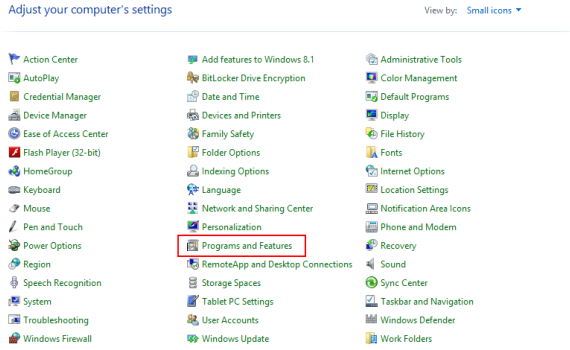
- On the Uninstall or change a program screen, find the entry for Roll Around or any new application that looks suspicious. Select it and click Uninstall/Change

- Be advised this technique works well for the regular applications but might be inefficient for removing malicious programs.
Remove Roll Around Ads virus from web browser
The workflow below is intended to eliminate malicious objects, such as add-ons or plugins, from the browsers that got impacted. Given the persistence-related features of this particular infection, the optimal workaround is to restore the affected browser’s settings to their original state. This will prevent the virus from further interfering with your preferences.
Ads by Roll Around removal from Google Chrome
- Click the Chrome menu icon and select Settings
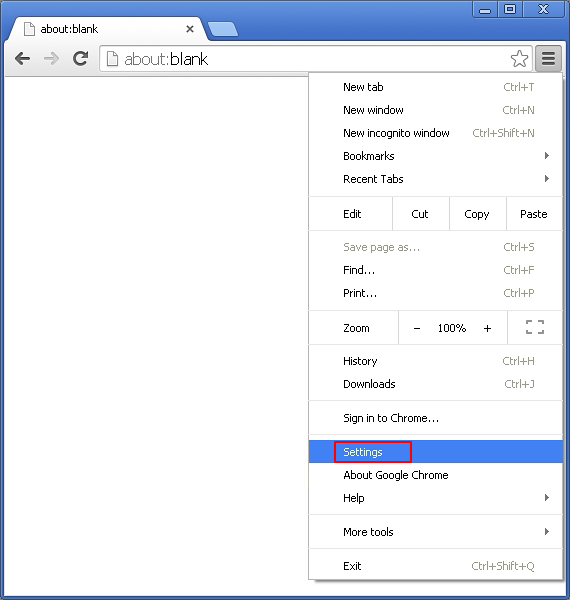
- When the Settings screen opens, find the link that says Show advanced settings and click on it
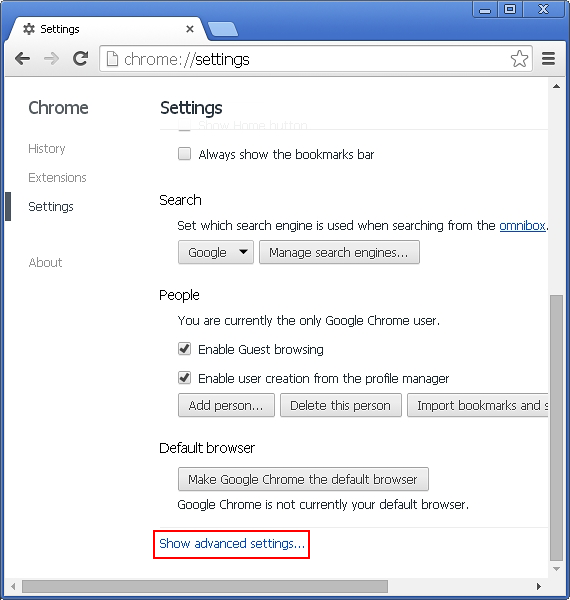
- Proceed by clicking on the Reset browser settings button
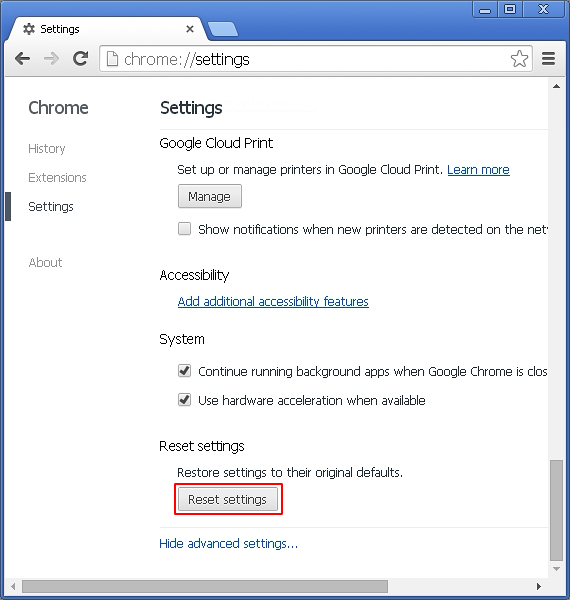
- For you to evade any unintended consequences of the reset, Chrome will display a note about the settings and fragments of browsing data that will be lost. Read the notification and click Reset in case you agree
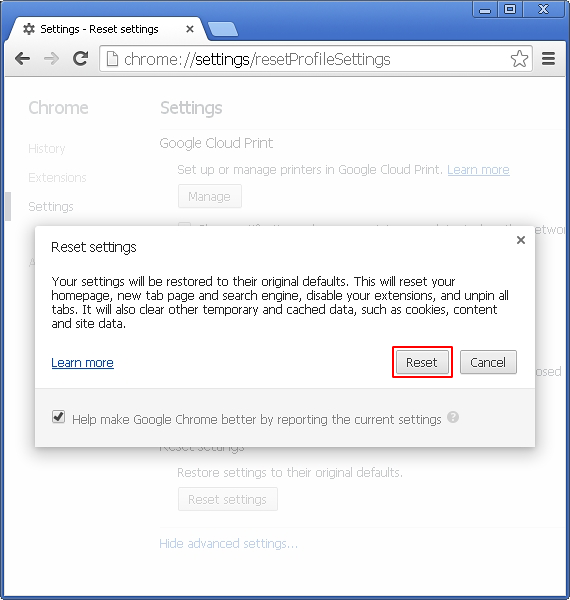
- Restart Chrome.
Ads by Roll Around removal from Mozilla Firefox
- Open Firefox and select Troubleshooting Information on the Help drop-down list
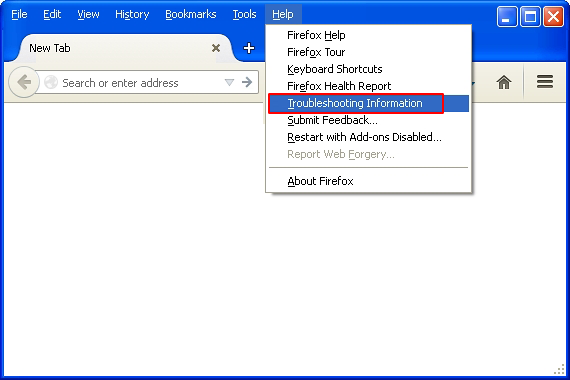
- Locate the sub-section titled Reset Firefox to its default state and click on the Reset Firefox button to proceed
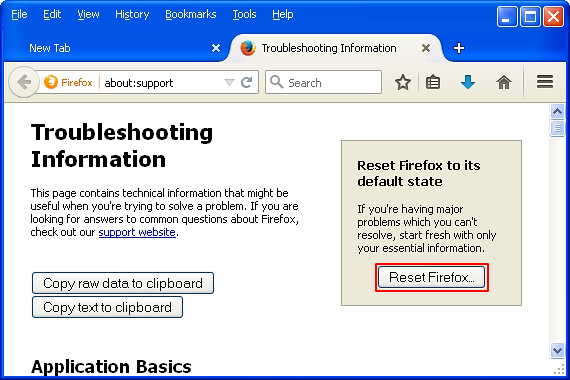
- Restart Firefox.
Ads by Roll Around removal from MS Internet Explorer
- Select Internet Options under Tools in IE
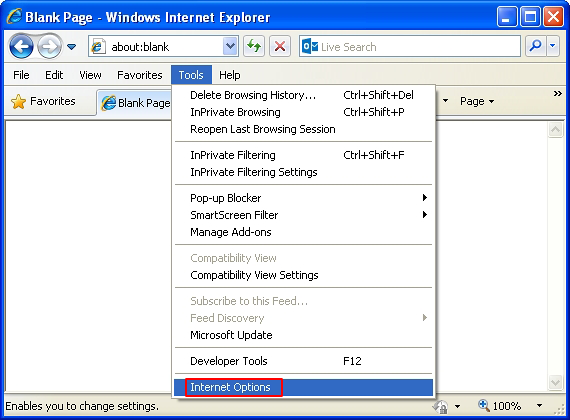
- Select the Advanced tab on Internet Options screen and click on the Reset button
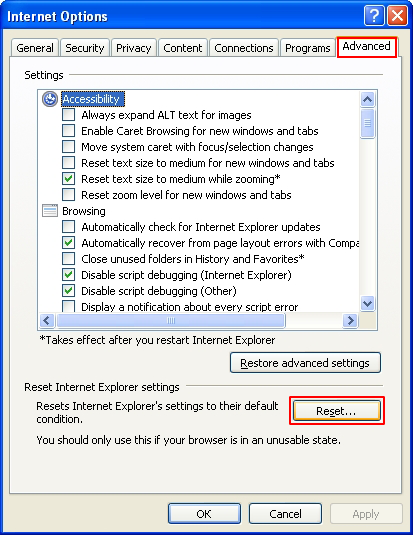
- The browser will now display the Reset Internet Explorer Settings dialog. Review the points on what the resetting includes. Activate the option saying Delete personal settings and click on the Reset button as shown on the image
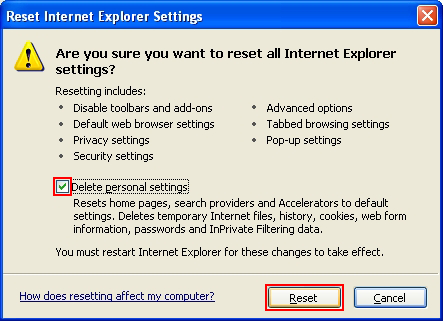
- Restart Internet Explorer
Verify thoroughness of the removal
Having carried out the instructions above, add a finishing touch to the security procedure by running an additional computer scan to check for residual malware activity
